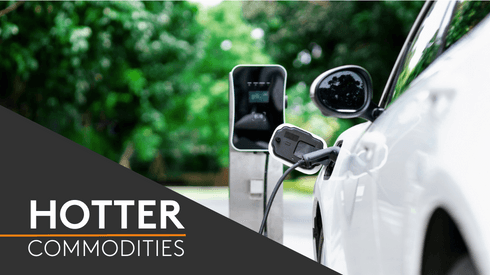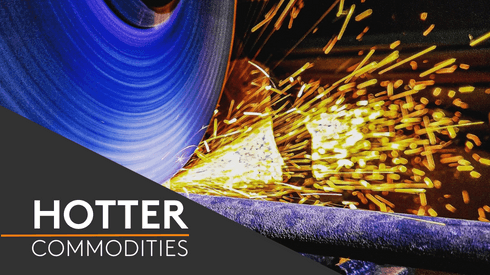Recent delays in restrictions on sourcing graphite from countries designated Foreign Entities of Concern (FEOCs) “gave [consumers] more time to continue to source Chinese products… rather than pushing to accelerate the purchasing from FEOC-compliant producers such as ourselves,” Syrah’s CEO said.
Syrah, a major ex-China graphite producer, has one of the world’s largest graphite mines (Balama, in Mozambique) and a major anode plant (Vidalia, in the US).
The CEO’s outlook remains positive, and it is “apparent to all customers that there will be significantly more demand than non-FEOC supply in 2027,” he said.
The US has announced significant policy support for its domestic battery and battery raw material supply chain.
But the delayed implementation of some support mechanisms, the looming presidential elections and a generally capricious policy environment pose potential headwinds, Verner said.
In other areas, there remains a lack of clarity around the implementation of already announced measures, such as the Section 301 tariffs, which were first proposed in May but whose final determination was delayed twice before being confirmed on Friday September 13.
According to the final determination, a 25% tariff on Chinese natural graphite imports into the US will take effect in 2026.
FEOC requirement postponement poses problems
Changes to FEOC requirements are a key contributor to uncertainty. They exclude electric vehicles containing specified materials produced in China from eligibility for 30D tax credits, which allow qualified buyers to save up to $7,500 on a new clean vehicle.
But guidance issued by US government agencies in May introduced a transition period for graphite from FEOC countries such as China. The guidance will now come into effect starting in 2027.
China produces most of the world’s anode active materials, though there is substantial graphite flake production outside of the country, including from Syrah’s own Balama mine.
This transitionary period has led to some decreased urgency to secure graphite from non-Chinese producers, affecting both the pace of qualification and of investment decisions, Verner said.
[The transition period] is changing what customers believe they can achieve in the qualification process… Given longer available time in their planning, [they] will always take a more conservative approach.
Despite headwinds from policy uncertainty, Verner remains positive about the longer-term outlook for the domestic anode supply chain.
“We certainly have a view that the long-term demand picture is extremely positive for the localized supply,” he said. “And that is leading to some other customers – I’m talking broad groups – who are actually trying to speed up their processes to ensure that they are demonstrating to the US that they are undertaking these steps.”
Production of active anode material at Syrah’s Vidalia facility in Louisiana began earlier this year.
Verner explained that, while 2025 was closing in, the plant had “very clear interest” from customers to secure graphite from non-FEOC producers to ensure their vehicles were eligible for 30D tax credits, but because of the guidance change, interest has cooled somewhat.
“I think there have been some cases of reduction in the pace of qualification, or commercial process, and some cases of decreased urgency to secure graphite from non-FEOC sourcing,” he said.
Balama produced some 34,900 tonnes of graphite in the first half of 2024 and shipped approximately 29,800 tonnes of graphite to third-party customers, including a 10,000-tonne breakbulk fines shipment to Indonesia, according to Syrah’s interim financial result released this week.
Verner emphasized that the Balama mine gives Syrah and Vidalia an advantage. “Anyone developing capacity that requires natural graphite looks at Balama, because there is a very clear understanding that the capacity is not being fully utilized at this stage,” he said.
Syrah shipped 500 tonnes of graphite from Balama to its Vidalia facility during the first half of 2024, according to the financial report.
A cautious approach to Vidalia expansion
Policy uncertainty has contributed to a cautious approach in the expansion of Syrah’s Vidalia plant, the chief explained.
Currently installed anode material capacity at Vidalia is 11,250 tonnes per year, and the company has a feasibility study that is ready for a final investment decision, subject to funding and customer offtake commitments, to expand to 45,000 tpy, Verner explained.
But “the longer that policy is uncertain, the longer that customers have uncertainty about what underlying policy is in place, the harder it is to make that final investment decision,” Verner said.
In the meantime, to manage operational costs and working capital, Syrah plans to only ramp up the existing Vidalia facility to the level necessary for progressing customer qualification processes, the CEO added.
“I guess, at a high level, the policy shifts pose a risk to both near-term demand and definitely pose a risk around delayed or potentially delayed or completely canceled investment decisions towards FEOC-compliant supply if [original equipment manufacturers] and battery manufacturers are not communicating their planned sourcing,” the CEO explained.
Verner added that recent policy developments in China, particularly the country’s expansion of synthetic production, have also influenced Syrah’s plans.
The dramatic increase in China’s synthetic graphite anode production has helped contribute to a global supply-demand deficit switching to a surplus over the last two years, according to Fastmarkets’ research.
“Overcapacity in the synthetic sector in China has been the main factor weighing on price over the last two years,” Fastmarkets analyst Georgi Georgiev said.
“But this is not the whole picture. While natural graphite miners outside China were taking supply cuts, state-owned companies in China have kept supplying material into the market, which has in practice offset falling supply from Africa to China,” he added.
This, along with generally underwhelming demand, has led to a depressed price period for graphite flake fines, which are used to produce uncoated spherical graphite, the precursor to graphite active materials.
“Demand for synthetic anode material has been growing as synthetic producers have lowered their prices significantly, in some cases even below the prices of natural graphite anodes, in pursuit of market share and higher utilization rates of their expanded manufacturing base,” Georgiev said.
“[Battery] cell makers have benefited from the opportunity to further lower their costs in a very competitive market,” he added.
Fastmarkets’ weekly assessment for graphite flake 94% C, -100 mesh, fob China was $460-489 per tonne on Thursday September 12, narrowing downward week on week from $460-508 per tonne and markedly down from $530-577 per tonne on January 4.
Graphite flake fines prices in Europe have been more positive so far this year, but support has mostly come from the supply side, including higher freight costs and China’s export controls on graphite.
Fastmarkets’ weekly assessment for graphite flake 94% C, -100 mesh, cif Europe was $600-700 per tonne on Thursday, down from $650-700 per tonne on September 5 but flat compared with January 4.
Verner insisted that Syrah’s mine positions the company to capitalize well on regional demand.
“For anyone to develop meaningful downstream capacity to support that US market, they obviously need non-FEOC upstream supply, and Balama is absolutely best placed to provide that, and we’ve already seen that with the offtake contract we’ve put in place with POSCO to supply out of Balama and initial sales to BTR in Indonesia,” he said.
Elections loom
And with the US elections looming, Verner gave a positive outlook regardless of the eventual president, arguing that the effects of a Donald Trump presidency would be comparable to a Kamala Harris one.
Donald Trump has been critical of the Inflation Reduction Act and warned he will consider ending the $7,500 tax credit for electric vehicle purchases, Reuters reported.
But Verner said that Trump has also strongly suggested the potential for increased tariffs on imported materials from China, which could prove a boon for the domestic supply chain.
“Potentially the mode of policy implementation may be different, but the outcome is likely to be quite similar in terms of the development of domestic supply of these critical materials,” Verner said.
Looking for the latest graphite news, market intelligence, prices and forecasts? Head to Fastmarkets’ dedicated graphite hub.






